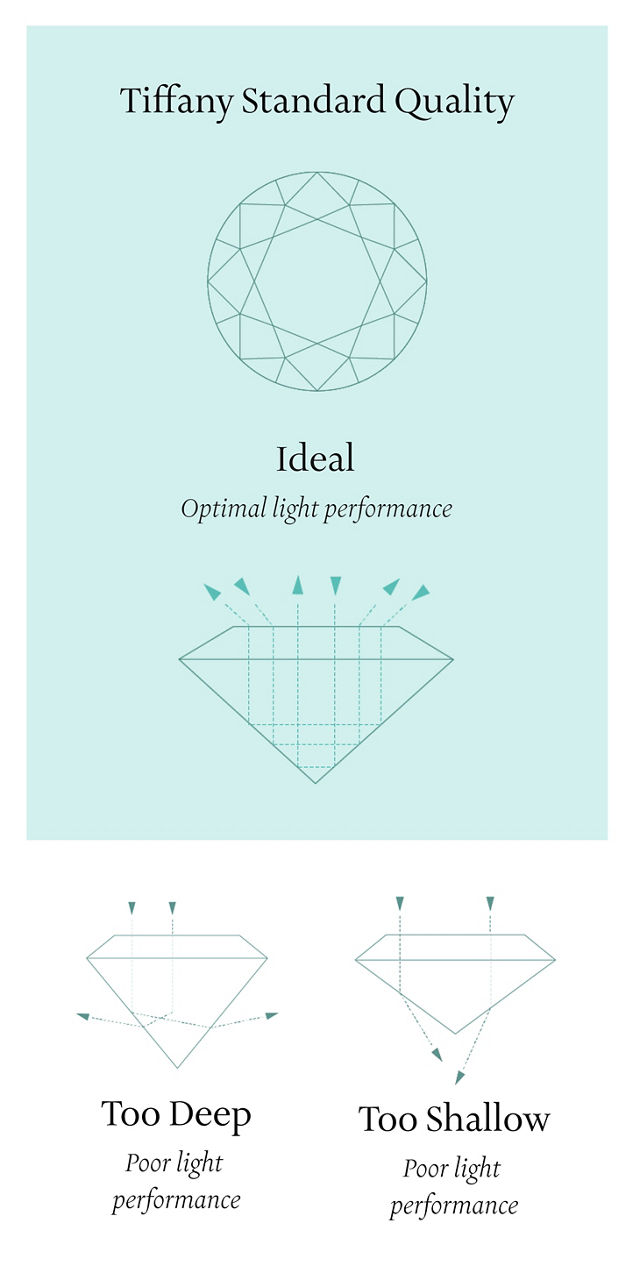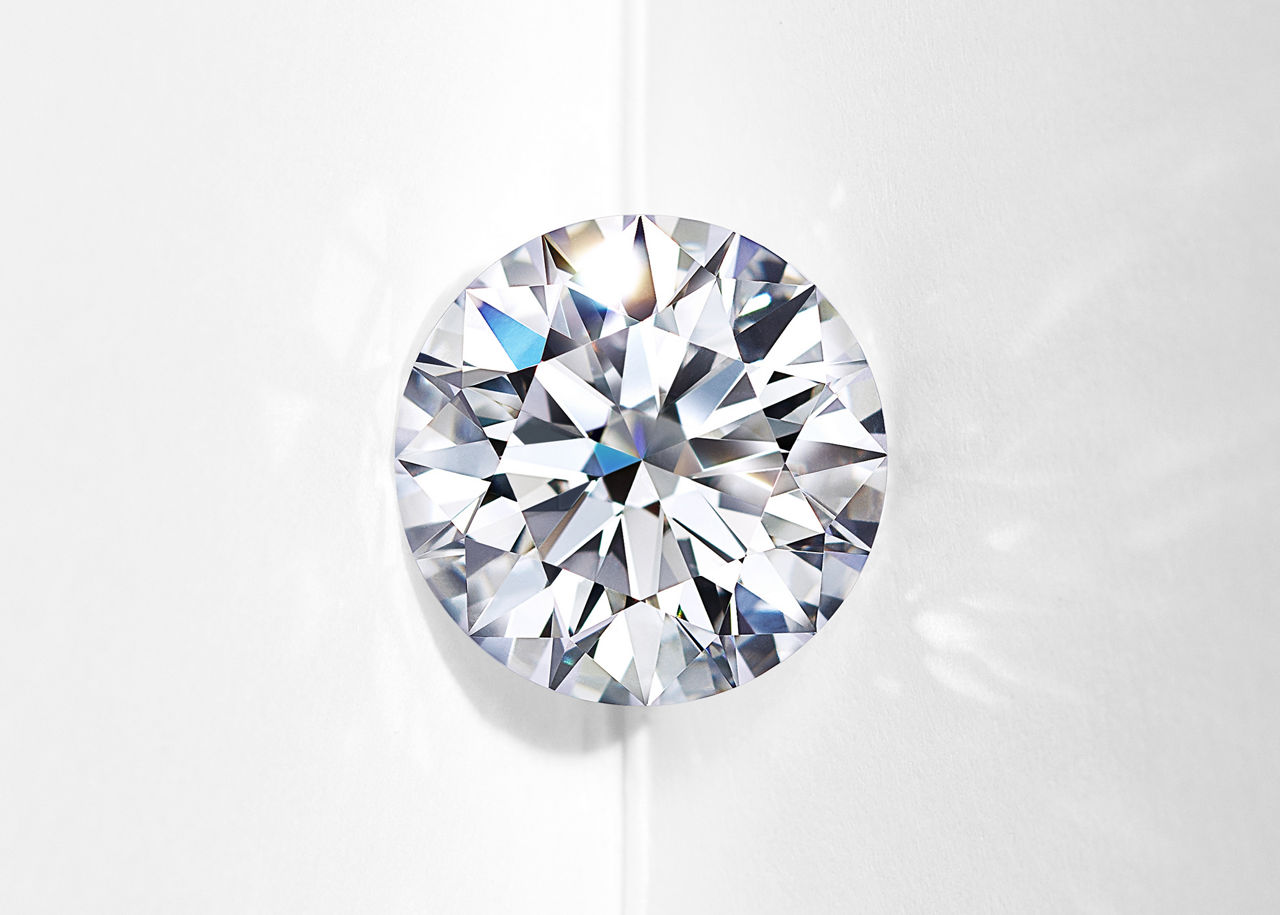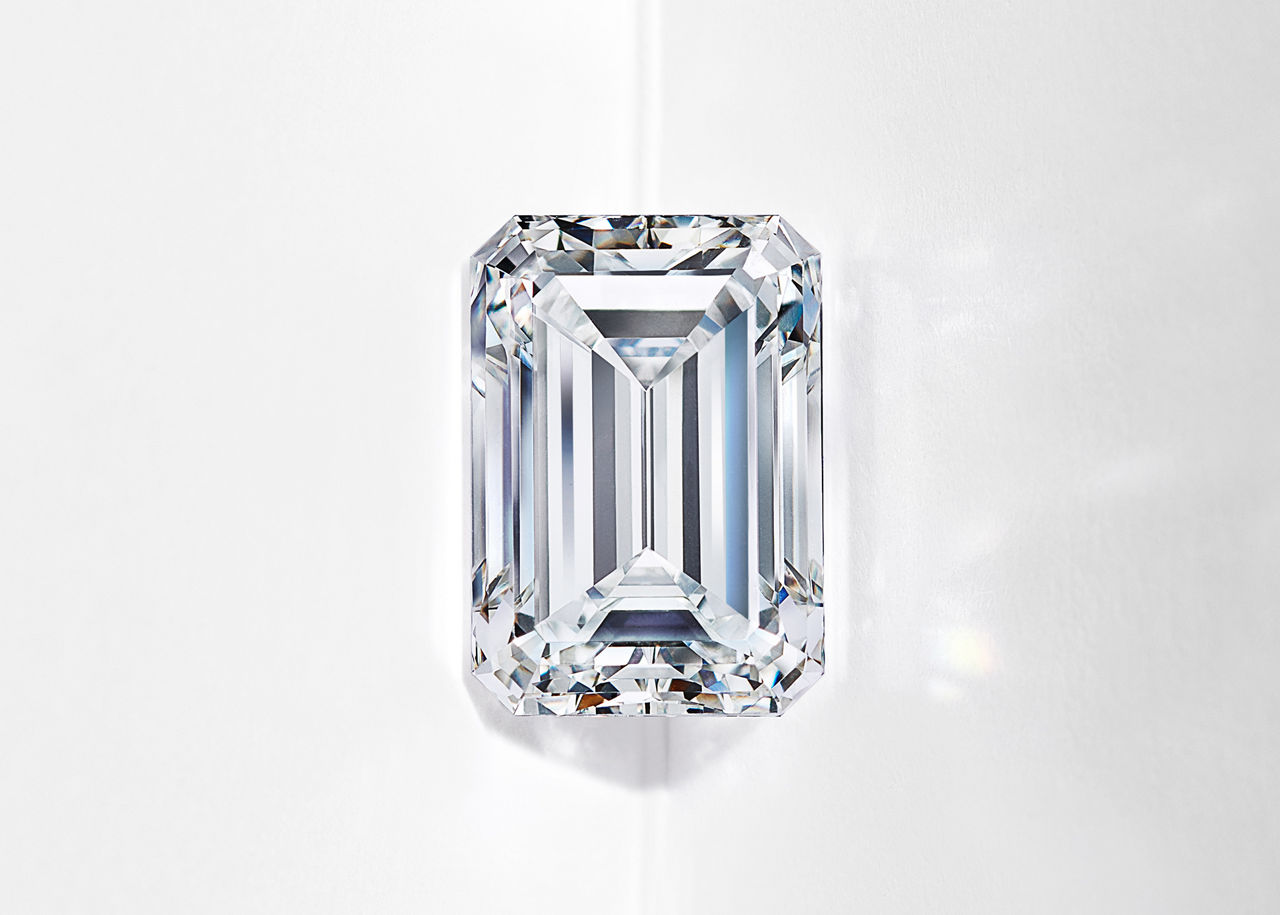Diamond Cut
Diamond cut is often interchanged with diamond shape; however, they refer to different things. The most important of the 4Cs, cut refers to how a diamond’s facets interact with light, whereas diamond shape refers to the geometric appearance of a diamond.
At Tiffany, our in-house artisans are committed to crafting the most expertly proportioned diamonds, and all our round brilliant engagement diamonds are rated triple excellent as a result. This precision is what sets Tiffany diamonds apart.

The gemmological standards in this section refer only to individually registered engagement diamonds set in certain ring styles.








